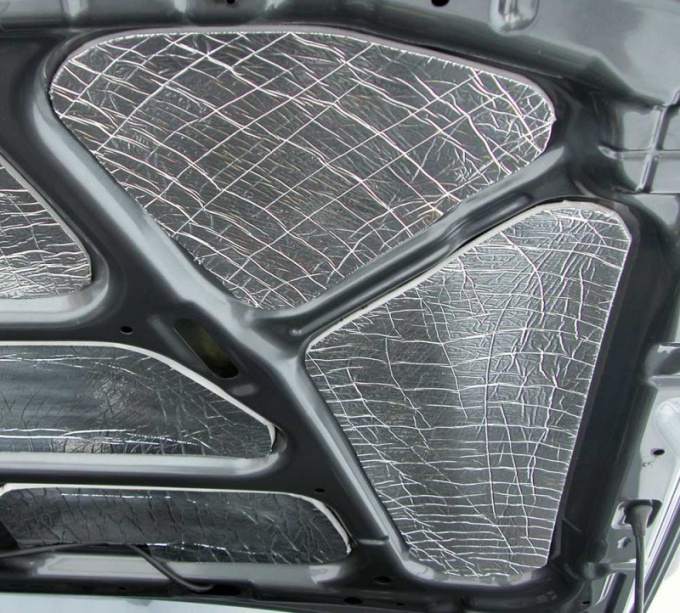You will need
- sheets of Vibroplast;
- construction Hairdryer;
- - a set of metal rollers;
- - degreaser;
- - cotton gloves.
Instruction
1
Driving the car into the garage. If you don't have a garage, then find some indoor space so as to install the insulation in the open air is not recommended. If you want you can disassemble the hood to get a free access to its back side, which will be applied insulation layer.
2
Wash the inside of the hood with warm water and technical means to remove the dirt and dust. If you wash the hood without removing, close the engine compartment with plastic wrap so that the water does not leak on the transaction, and other units. Allow to dry the washed surface.
3
Cut-out, noise insulation material parts according to the size of the recesses on the back side of the hood. It is divided into separate areas by ribs. In any case, don't stick a solid piece of insulation! In this case, the pasted layer will be no good. The more you pick up pieces of insulation, the less you will hear the motor running.
4
Thoroughly degrease the surface. Remove the protective layer from the back side of fibroplastic. Stick a piece of adhesive side on the metal and press down. Hire a building dryer. Turn it on maximum power. Heat of fibroplastic circular flowing movements. At the same time smooth the applied layer of the metal roller. Use cushions of different colors, so you can do fibroplastic even in the most remote places.
5
Make a overlay, if you want to hide the brilliant insulation. For the manufacture of lining, use only heat-resistant material. Mount the pad on the rubberized caps that the motion she is not rattled. You can also put avtoodeyalo, if the machine the problem starts at negative outside temperature.
Useful advice
Work with the construction Hairdryer very carefully to not accidentally burn your fingers! Before gluing put on cotton gloves.
